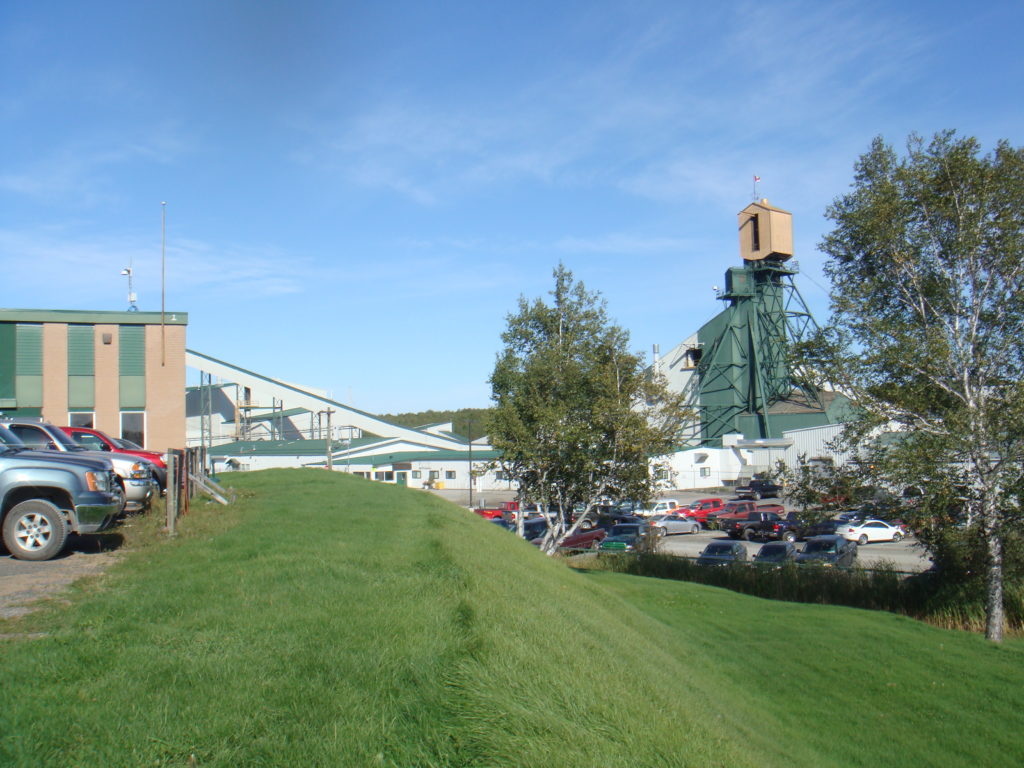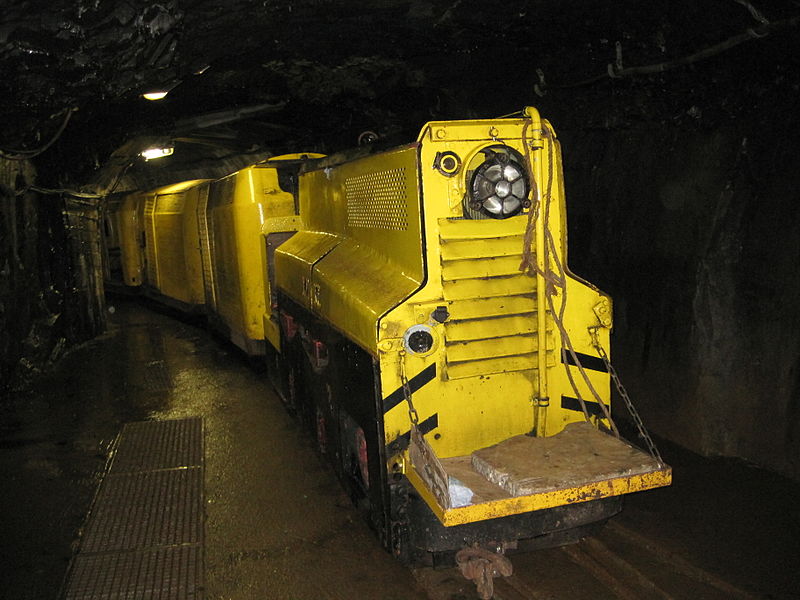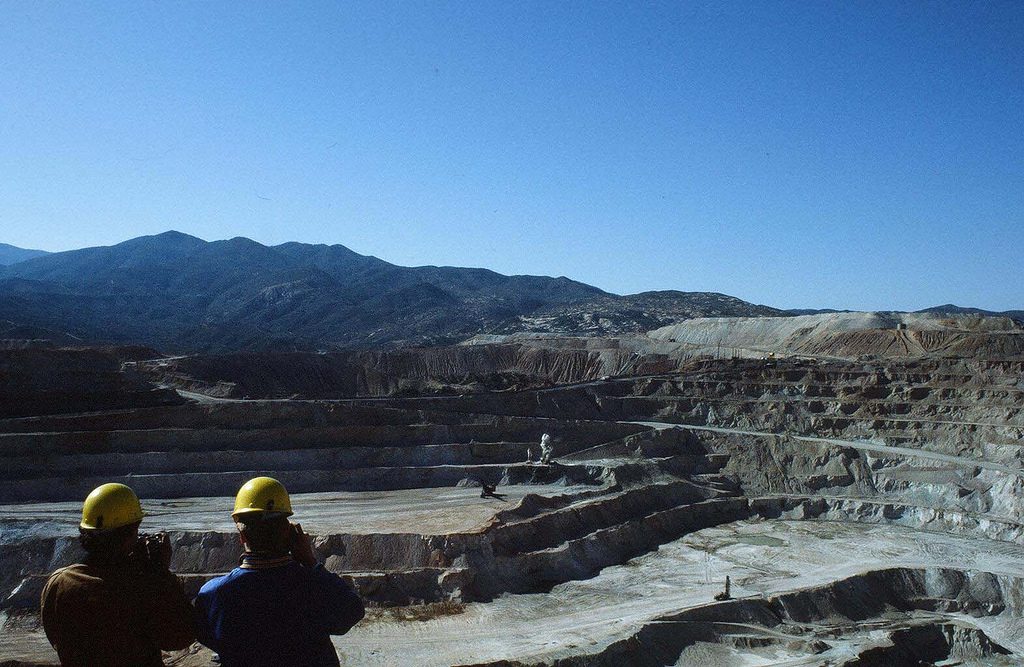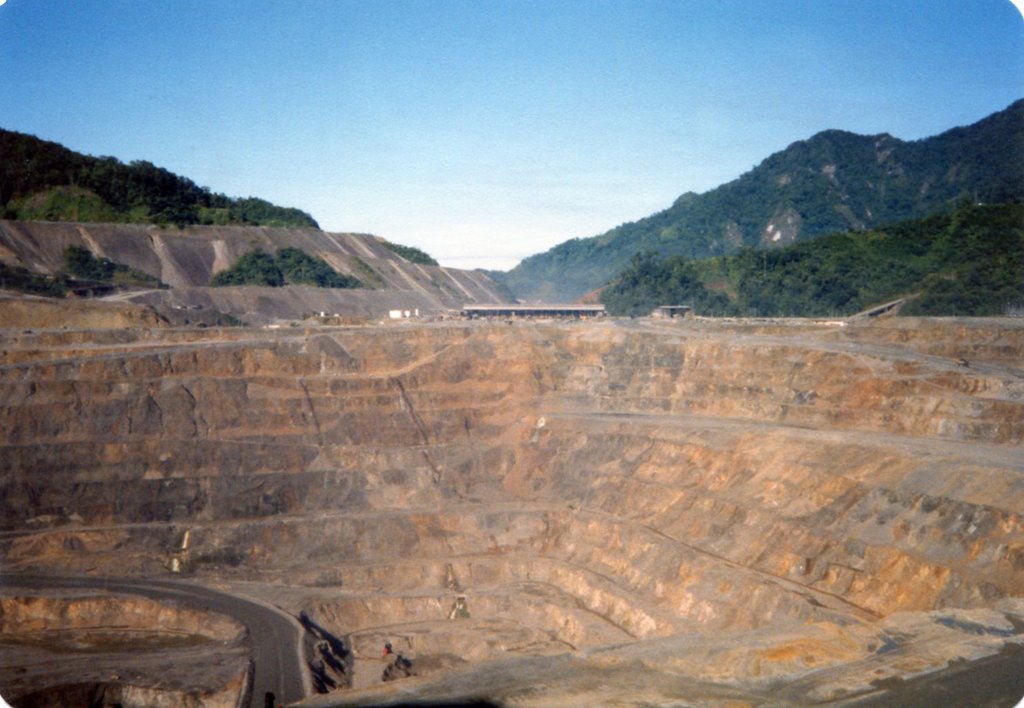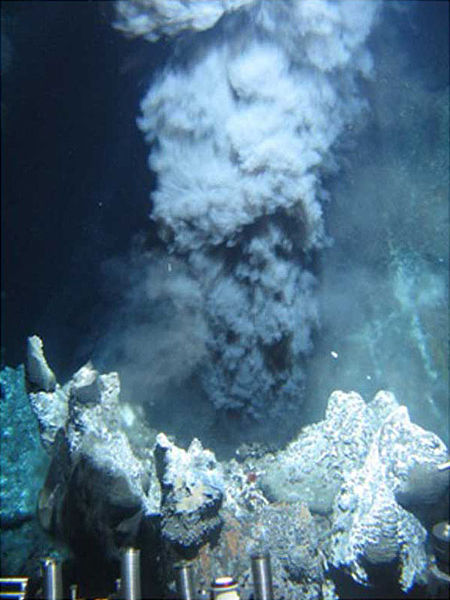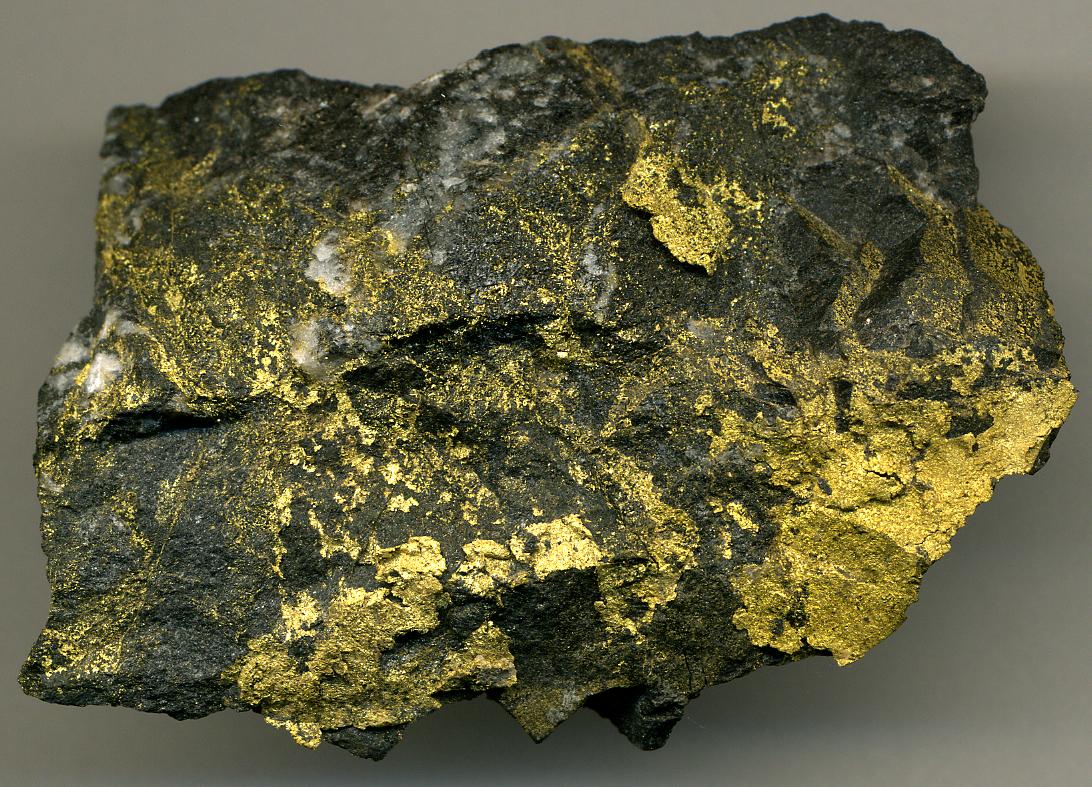Introduction
The area has been explored, the deposit has been modeled, and the ore has been extracted: now what? It’s time for mineral processing. Mineral processing is the first thing that happens to ore and mineral-bearing rock after they leave the mine or quarry.
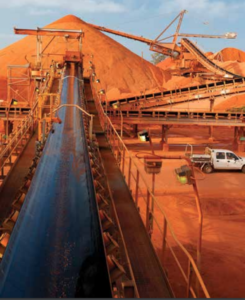
There are four steps in mineral processing: sampling/analysis, comminution, concentration, and dewatering. This article is the second in a series about mineral processing and covers the last two steps. If you missed the first article in the series or need a refresher, read it here.
Concentration/Separation
Separation or concentration is the process of separating valuable minerals from the gangue or raw material. At this stage, the ore material has been ground into small pieces. Minerals are separated based on their physical and chemical properties, such as color, density, and magnetism. Depending on key differences of the properties between valuable minerals and surrounding material, the following techniques are used:
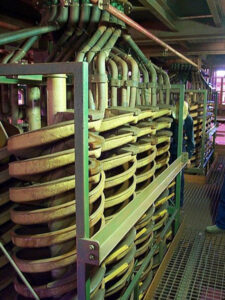
Gravity Separation is used to separate minerals of different densities. Material is suspended in a viscous medium, like water or organic/inorganic fluids, and exposed to centrifugal, magnetic, or buoyant forces. Spiral concentrators are the most commonly used method. They use centrifugal forces, causing heavier minerals to concentrate closer to the inside of the fluid stream. These are typically used to concentrate heavy minerals like ilmenite, rutile, zircon, iron, chromite, and manganese. Shaking tables are low-capacity machines that use back and forth vibrations to concentrate fine ores of Nb, Ta, and W.
Flotation is a solid-liquid separation driven by the wettability of minerals–that is, whether they attract water (hydrophilic) or repel water (hydrophobic). During this process, bubbles are injected into the pulp (the free-flowing mixture of water and powdered ore). As the bubbles rise through the pulp, the hydrophobic mineral particles attach to them. When the minerals attach to the bubbles’ surfaces, they rise to the foam that forms at the top of the pulp. From here, these mineral particles can be removed with the foam. Waste minerals will sink to the bottom of the mixture. This technique is used to separate Cu, Pb, and Zn-bearing minerals.
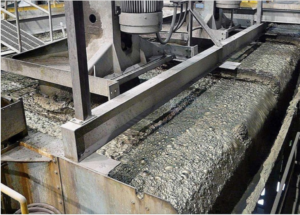
Magnetic Separation is used to separate magnetic minerals from waste material. Strongly magnetic minerals like magnetite, Fe-Ti oxides (ilmenite and maghemite) or Fe sulfides (pyrrhotite) can be removed from their gangue by low-intensity magnetic separation. Examples of magnetic separation tools include disc separators, drum separators, roll separators and overhead magnets.
Optical Separation is the separation of minerals by color. Optical sorters expose the ore material to infrared, visible, and ultraviolet light. A sensor detects how the light is reflected or absorbed by the different minerals in the ore material. This is an emerging technology and has been tested on magnesite, quartz, lignite, hematite, copper, and gold ore samples.
Dewatering/Drying
After separation, the ore material must be dewatered/dried. Most parts of the mineral processing workflow depend on water– for example, comminution and flotation use large amounts of water. All remaining water must be removed from the ore for it to be transported for refining. The dewatering method for a specific mineral/ore largely depends on the particle size and initial water content. Modern dewatering techniques use pulse combustion, vacuum filters, thickeners, dewatering screens, and centrifuges to reduce ore moisture. The water removed from the ore material is often recycled for use in ore processing plant operations.
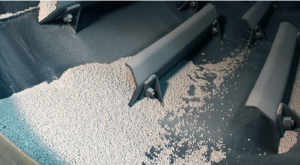
Thermal drying is also used for dewatering ore material, particularly for fine-grained materials with low moisture content. This process is done with industrial dryers, like rotary drums, hearth dryers, and conveyor dryers.
Conclusions
Once mineral processing is complete, and the valuable minerals have been separated from waste, they can be turned into useful products. Iron ore is smelted and refined to form steel. Refined copper ore is used in electrical wires, building materials, and industrial machinery. Processed lithium ore is treated with sulfuric acid and converted to metal via electrolysis for use in batteries.
Ultimately, all ore must be processed for it to be converted into a useful material. The mineral processing workflow is highly dependent on the type of ore, and processing costs will vary accordingly. Mineral processing is a crucial part of a comprehensive investment decision, even though it comes long after exploration, drilling, and mining.
Further Reading
- Wills’ Mineral Processing and Technology (textbook)
Subscribe for Email Updates

